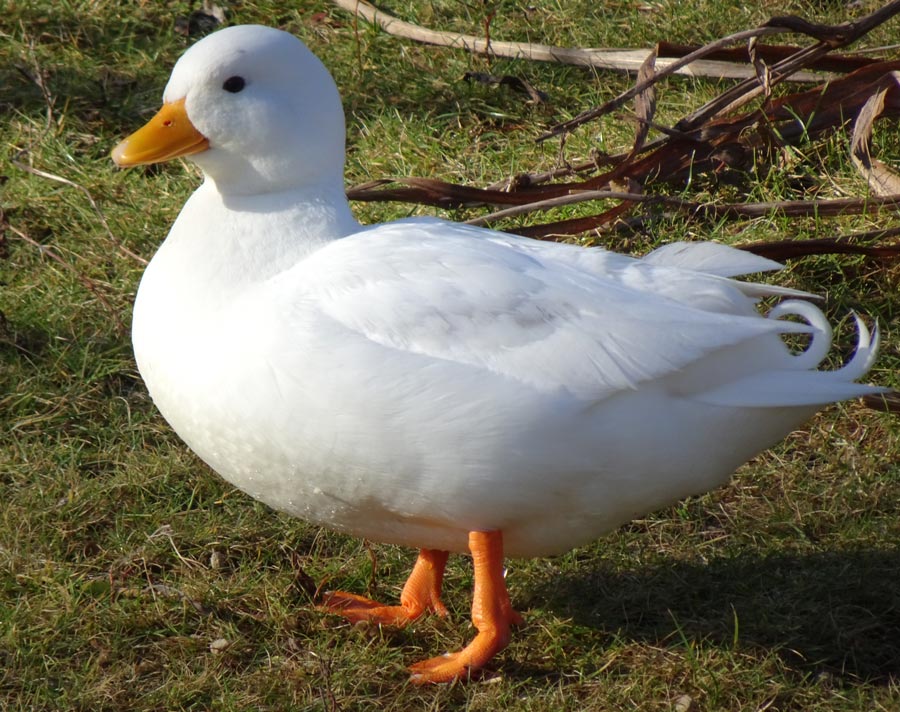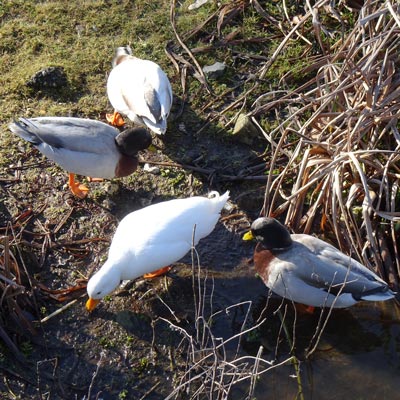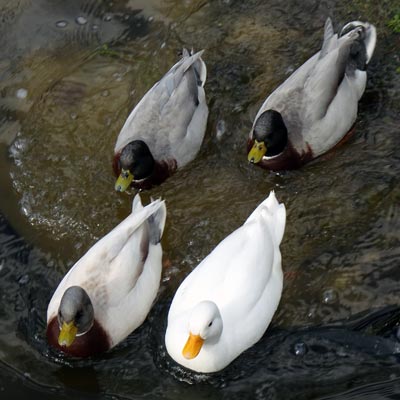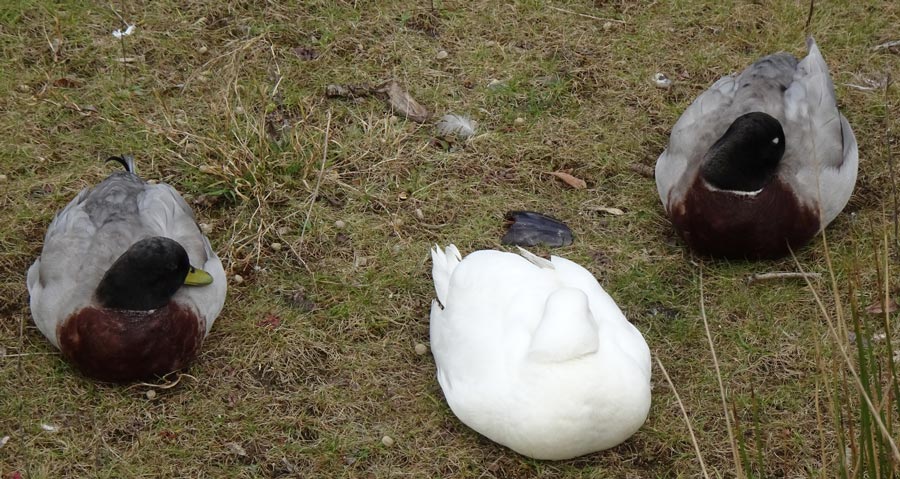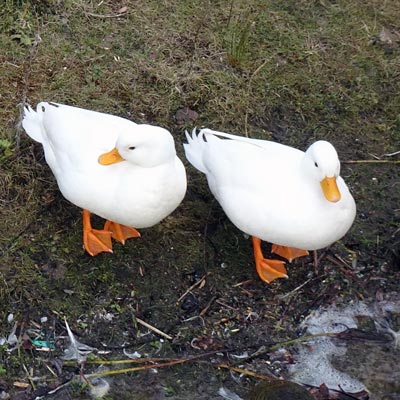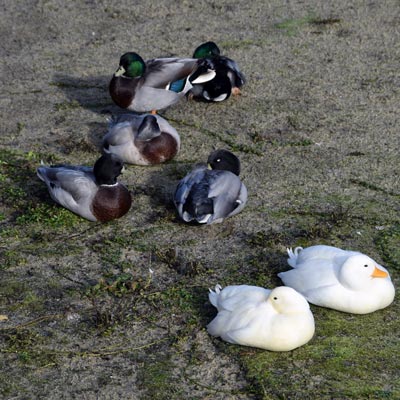The Call Duck is a breed of domesticated duck raised primarily for decoration or as pets. Call ducks look similar to some other duck breeds, but are smaller in size. Call ducks were initially used in hunting, where their own calls and quacks - which are characteristically high in pitch as a result of their small size, and especially loud - would attract wild ducks towards the hunter.
This practice has almost entirely been replaced with artificial duck calls, with Call Ducks now being kept primarily as pets.
The first recorded mentions of the breed are from the Netherlands where it was used as a decoy and known as a coy or decoy duck. The high-pitched distinctive call was used to lure other ducks into funnel traps. Later, hunters would tether call ducks to draw other species within range.
It is believed to have originally come from the Far East, although no records of its introduction to the Netherlands exist. Other bantam breeds are known to have been imported to the Netherlands in the 17th century and Van Gink, writing in The Feathered World in 1932, supposes "There is a possibility that importations were made by Dutch captains from Japan ... especially as the Call Duck's type is very different from the ordinary European type of duck to sport from it, and since they breed so true they must be a very old-established breed."
|
|
It was introduced to British Isles by the 1850s. By 1865, it was one of the first six waterfowl breeds to be standardized there, but by the middle of the 20th century they were rare.
Determined efforts by a few breeders re-popularized the breed and today they are common. In the United States, the grey and white varieties were listed in the first Standard of Perfection in 1874 and in 1935, the use of call ducks in duck hunting was permanently banned in every state as it resulted in over-harvest by hunters and was not in line with the conservation efforts that were then being realized.
They are popular exhibition birds and win more duck championships in shows in North America than any other breed. Call duck themed cafés, where the ducks are petted by customers, were opened in various cities of China.
A group of seven Call Ducks were "dumped" at Petersfield Pond at the end of 2021. They consisted of two white ducks and five that looked very similar to Mallards, but much smaller.
The group tend to stay together and initially did not seem to eat the swan and duck food that we gave them, but eventually did eat it.
The Mallard-looking Call Ducks do look like ordinary Mallards but are much smaller - as you can see when they have been photographed with the white Call Ducks. |
